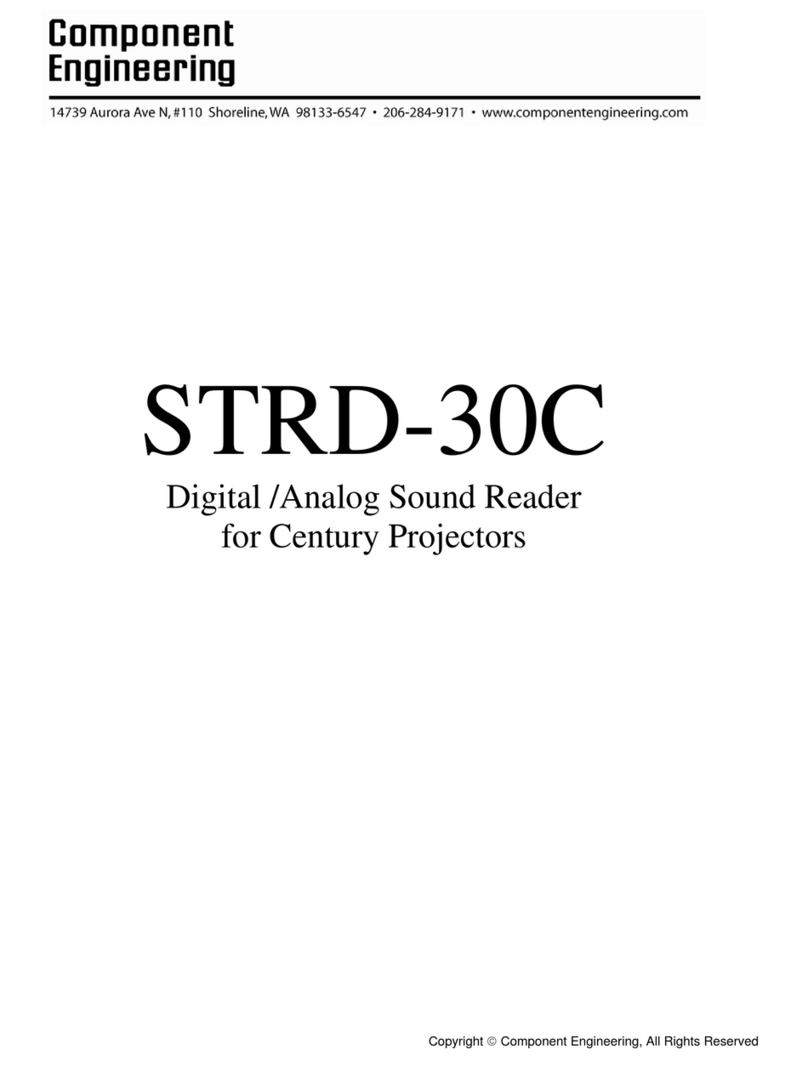
2
Position the locator plate
Install the adaptor block
Optical pieces properly aligned
As you begin the installation please refer to the drawings on the
left. The first part to install is the locator plate. This is a 3/16"
(4.7mm) thick flat aluminum piece in which there is a large
hole....just the size of the drum shaft ball bearings. Attached to
the plate is a standoff post used to support the LED assembly
Position the locator plate’s large hole over the sound drum’s
ball bearing seat and hold in place with three 8-32 X 1/2" screws
through the holes on the right side of the plate.
Do not tighten these screws.
This is a good time to also loosely install the adapter block.
Look at the locator plate you just put in, and in the tongue-like
piece on the left you will see two holes into which the dowels
from the adapter block are to be inserted. They are supposed to
be snug, so you may have to proceed slowly. The four mounting
holes in the adapter block will now be over the tapped holes
originally used to mount the slit lens holder in the casting. Install
the four 8-32 X 1/2" screws but do not tighten.
The reason for all this loose mounting is so that we can get all of
the optical pieces properly aligned exactly on radius with
reference to the center line of the sound drum. You are going to
use the outboard sound drum bearing to accurately position the
locator plate, and then all the other parts will automatically be
aligned. You can do this either with a loose bearing, or, as is
usually the case, with the bearing still on the shaft. The idea is to
slide the bearing through the large hole in the locator plate and
part way into the bearing seat. With the bearing partly in the plate
and partly in the bearing seat, the plate will be positioned exactly
on center with respect to the sound drum. Now you can tighten
the three screws which hold the plate, the four screws in the
adapter block, and finish reinstalling the sound drum and
flywheel.




























